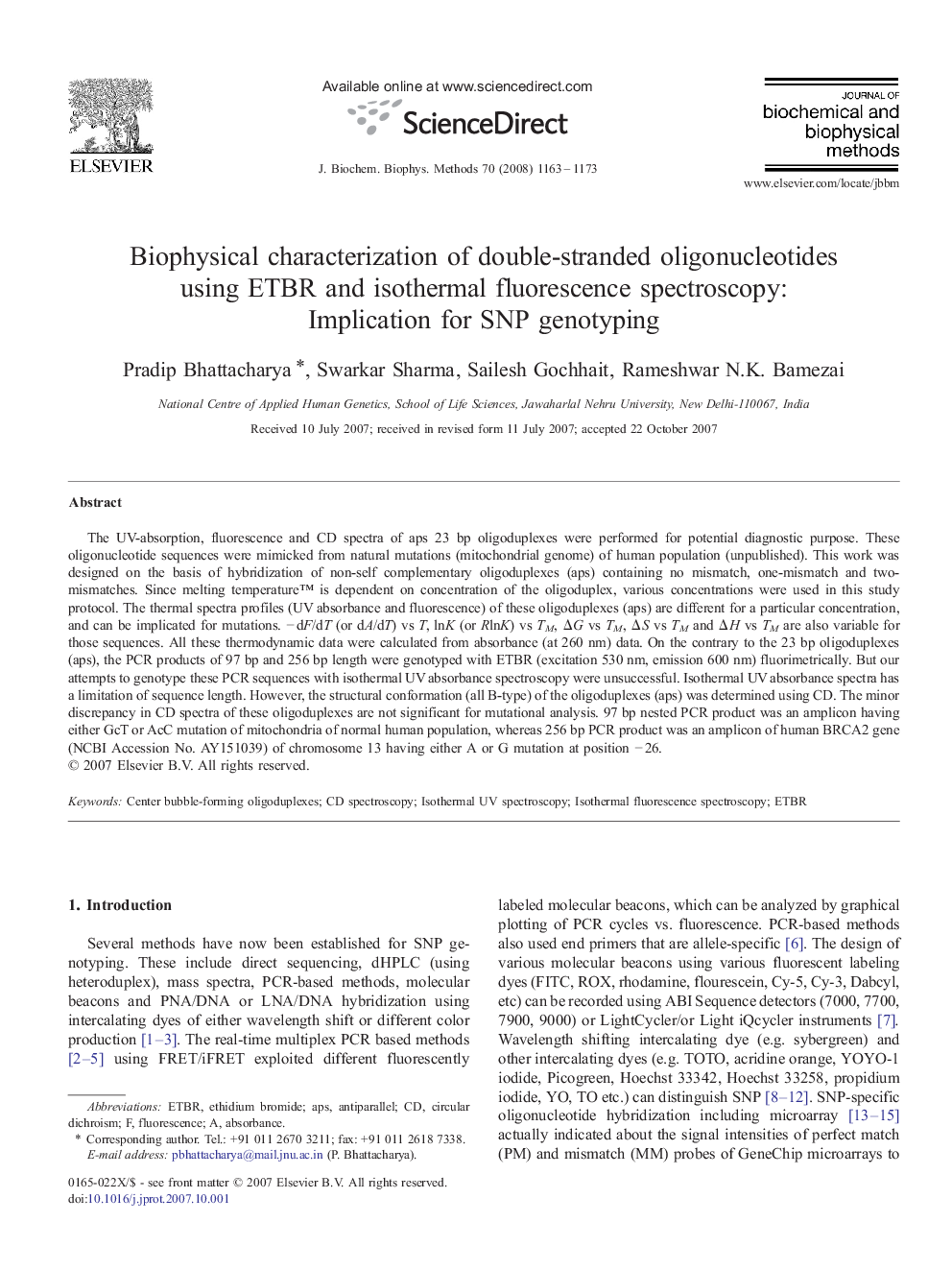| Article ID | Journal | Published Year | Pages | File Type |
|---|---|---|---|---|
| 1988404 | Journal of Biochemical and Biophysical Methods | 2008 | 11 Pages |
Abstract
The UV-absorption, fluorescence and CD spectra of aps 23 bp oligoduplexes were performed for potential diagnostic purpose. These oligonucleotide sequences were mimicked from natural mutations (mitochondrial genome) of human population (unpublished). This work was designed on the basis of hybridization of non-self complementary oligoduplexes (aps) containing no mismatch, one-mismatch and two-mismatches. Since melting temperature⢠is dependent on concentration of the oligoduplex, various concentrations were used in this study protocol. The thermal spectra profiles (UV absorbance and fluorescence) of these oligoduplexes (aps) are different for a particular concentration, and can be implicated for mutations. â dF/dT (or dA/dT) vs T, lnK (or RlnK) vs TM, ÎG vs TM, ÎS vs TM and ÎH vs TM are also variable for those sequences. All these thermodynamic data were calculated from absorbance (at 260 nm) data. On the contrary to the 23 bp oligoduplexes (aps), the PCR products of 97 bp and 256 bp length were genotyped with ETBR (excitation 530 nm, emission 600 nm) fluorimetrically. But our attempts to genotype these PCR sequences with isothermal UV absorbance spectroscopy were unsuccessful. Isothermal UV absorbance spectra has a limitation of sequence length. However, the structural conformation (all B-type) of the oligoduplexes (aps) was determined using CD. The minor discrepancy in CD spectra of these oligoduplexes are not significant for mutational analysis. 97 bp nested PCR product was an amplicon having either GcT or AcC mutation of mitochondria of normal human population, whereas 256 bp PCR product was an amplicon of human BRCA2 gene (NCBI Accession No. AY151039) of chromosome 13 having either A or G mutation at position â 26.
Related Topics
Life Sciences
Biochemistry, Genetics and Molecular Biology
Biochemistry
Authors
Pradip Bhattacharya, Swarkar Sharma, Sailesh Gochhait, Rameshwar N.K. Bamezai,
